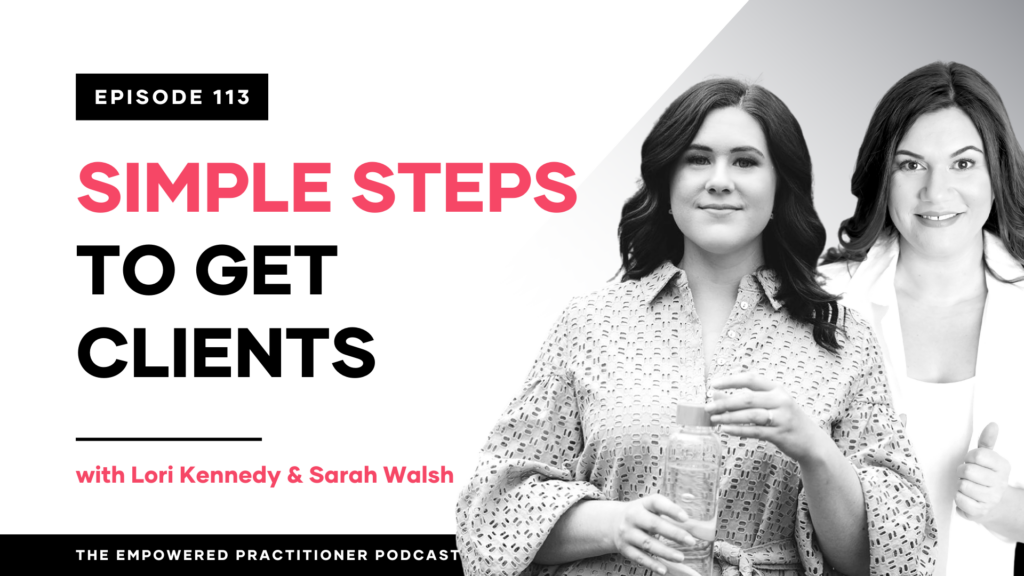Should I email or call? How many times do I email? What did I do wrong? Should I give a refund? How do I get the client back? Why isn’t the client doing anything I’ve suggested?
Have you ever experienced any of the following scenarios?
- You’ve completed the Transformation Conversion Consultation (AKA sales consult) and the prospect says, “I’d like to try this on my own for a few weeks.”
- You have a new client who’s done 3 sessions and won’t return your phone calls or emails to reschedule.
- You have a client who says she/he wants the results but continuously reschedules their weekly appointment.
- You have a client who shows up week to week but never completes any of the homework or implements any of the recommended changes.
How do you solve this problem?
Before I share some simple techniques you can use to get M.I.A. clients back, let’s look at why the client is having resistance in the first place.
It’s helpful to realize that when clients come to you for help, they are looking to alleviate acute symptoms – – get rid of acid reflux, learn to run a 10K, lose 20 pounds, do a cleanse, or reduce their stress, for example.
It’s unlikely that a client has ever sat in your office and proclaimed, “I’d like to completely overhaul my entire life, make life-altering drastic changes in 6 weeks or less, and revamp the way my family and I do everything we’ve ever done.”
Right?
Resistance can show up as…
- Not buying the blender
- Forgetting to bring their food journal to the appointment
- Being too busy to go grocery shopping
- Not taking the supplements
- Not being able to say “no thank you” to the glass of wine or piece of cake
- Not doing the 5 minutes of breathing exercises you suggested
- Failure to follow through and integrate any of the suggestions or behavior changes you want them to make
And, client resistance can feel like the client is working in opposition to you.
Resistance can come in all forms and can look different for each client. Take care to realize the client’s resistance isn’t about YOU or the value you are providing in your program.
A good coaching question to ask the resistant client is, “What is going through your mind as you make the decision not to go grocery shopping and are therefore left without the foods I’ve recommended?” (STATE RESISTANT BEHAVIOR OR THOUGHT)
You can safely assume there is an internal debate going on when the client chooses resistance over compliance. In order for you to truly help the client you need to understand what that internal debate is and why it’s happening.
When you break through the resistance barrier by understanding them, you can then co-create scenarios with your client to help them move through the resistance.
For example, the resistance to the grocery shopping scenario might be because the husband has previously ridiculed the wife for buying expensive food and never eating it, and therefore, wasting money.
Now that you know that, you can work together to reduce the grocery list items to a few crucial ones that will give the client the most health benefits and bang for their buck so to speak.
Then again you can’t work through the client’s resistance if it’s so strong that they won’t even commit to scheduling an appointment with you.
2 Ways To Get M.I.A. Clients Back
I’ll make you a deal – This one phrase works really well when you have a prospect sitting in front of you who really wants to achieve their goals but first wants to try your suggestions out on their own (giving away too much info is another topic we should cover if this happens to you).
Sample script:
You: Ok, Sally, no problem. You want to try out XYZ suggestion on your own for a couple of weeks before committing to work with me?
I’ll make you a deal… I am going to follow up with you in 2 weeks to check in and see if you are still having XYZ symptoms/problems.
If 2 weeks from now you haven’t been able to feel any positive changes do you agree to commit to the NAME OF PROGRAM so that I can help you solve XYZ problem? (USE THE TWO WORDS “SO THAT” TO HIGHLIGHT THE TRANSFORMATION YOU ARE PROMISING).
Sally: Yes. Ok. I agree.
You: Great. (Smile). Let’s schedule our follow up now. I have STATE TWO SPECIFIC DATES FOR HER TO CHOOSE FROM.
Then make a note in your calendar to follow up with Sally on the scheduled date.
Are you still? – This phrase can be used in a variety of different ways but works best as an email subject line or as an opening line of a phone call.
Email Subject Line: Are you still struggling to PROBLEM?
Hi James,
How are you? Are you still struggling with painful acid reflux symptoms? I wanted to check in on you because we haven’t touched base in a while.
I have a couple of openings in my schedule for next week or the week after.
Just click the link below to schedule at your most convenient day and time.
Link to the online schedule.
James, I’d really like to have a check-in session so that I can support you in achieving your goals. I promise it won’t hurt 🙂
See you next week.
Lori
Using the subject line “Are you” still reminds the client of their goal and slightly agitates them. When you check-in instead of follow-up you are demonstrating your love, concern, and support instead of your clinical responsibility.
Bring some humor and lightness to the check-in email or phone call so that the client feels at ease and not backed into a corner.
Remember that the client is resistant to change… not to you or your programs, so don’t take it personally. Coaching the client through their resistance is the only way to create lasting results.
Let me know if this helps you and what other client-resistant scenarios you’ve experienced in the comments below.


